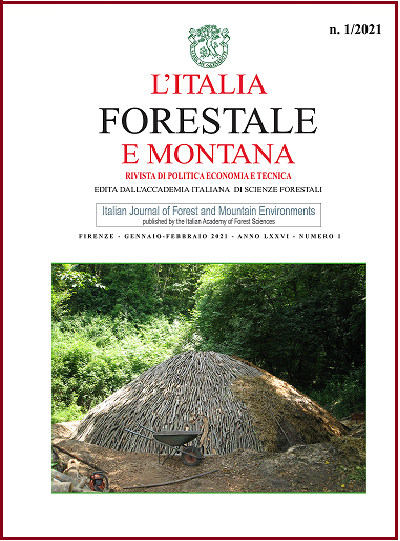Published
2021-05-10
Keywords
- Selezionato:Airborne Laser Scanning,
- Digital Terrain Mode,
- slope,
- coppice,
- charcoal
Abstract
In the medieval period the Casentino was an important center for iron working and for the production of charcoal necessary for this activity. Between XIII and XIV centuries the Guidi family owned various ironworks in the localities of Cetica and Raggiolo. In this area companies of charcoal burners were active and used local forest resources for the production of charcoal. In this study we mapped the old charcoal kiln sites over an area of 1841 hectares located west of the center of Raggiolo. The charcoal kiln sites were mapped by photointerpretation of LiDAR-derived images. The results are discussed on the basis of the historical events that occurred in the study area between the end of the XIII and the first decades of the XIV century.


